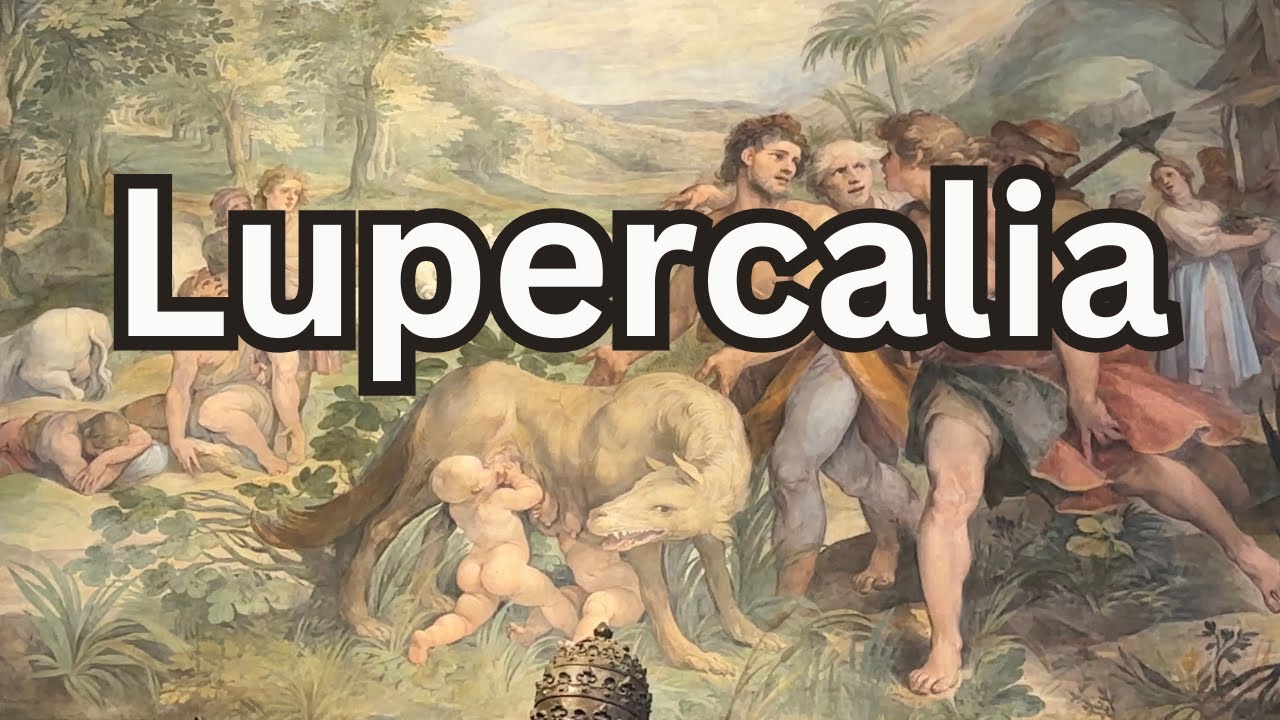Start with our video overview:
The Roman calendar originally had only ten months. The two winter months, January and February, were not observed due to a lack of agricultural activity. According to Livy, this changed under the reign of the second king of Rome, Numa Pompilius, who added January and February to the end of the calendar, making February the last month. While this story is most likely legend, February was part of the Roman calendar by 450 BCE, as a reform that year moved February to its modern position as the second month of the year. The name February comes from Februa, an ancient purification rite, and the Romans associated February with purification and ancestor veneration. February was host to many festivals celebrating these themes, as well as a number of pivotal events in Roman history.
February 1-6
- February 1, 194 BCE: The Temple of Juno Sospita is dedicated in the Forum Holitorium by consul Gaius Cornelius Cethegus. This temple celebrates his victory over the Insubrians, an ancient Celtic tribe.
- February 6, 62 CE: Pompeii is devastated by an earthquake. Seventeen years later, the city would be destroyed by the eruption of Mount Vesuvius.
February 8-11
- February 8, 421 CE: Constantius III briefly becomes co-emperor of the Western Roman Empire with Honorius, before dying less than a year later.
- February 8, 457 CE: Leo I becomes emperor of the Eastern Roman Empire.
- February 10, 474 CE: Zeno is named co-emperor of the Eastern Roman Empire by his young son, Leo III.
February 13-15
- February 13, recurring: Beginning of the nine-day Parentalia festival, dedicated to honoring deceased relatives. It was generally a private affair within families, but it kicked off with a public rite from the Vestal Virgins.
- February 14, 270 CE: St. Valentine is martyred in Rome. This is the source of the modern holiday Valentine’s Day.
- February 15, recurring: The Februa festival, dedicated to purification, is celebrated.
- February 13-15, recurring: The Lupercalia festival is held. During this festival, members of a priesthood ran around naked with whips and tried to strike women they encountered. A hit from the whip was believed to induce pregnancy and promote fertility. During the Lupercalia festival in 44 BCE, Mark Antony offered Julius Caesar a crown and he publicly rejected it. Unfortunately for Caesar, this gesture was not enough to stop his assassination a month later.
February 17-21
- February 17, recurring: Fornacalia was held in honor of Fornax, goddess of the oven.
- February 17, recurring: Quirinalia was held in honor of Quirinus. This was the name given to the deified form of Romulus, the legendary founder of Rome.
- February 17, 364 CE: Emperor Jovian dies.
- February 21, recurring: Feralia was held to celebrate the Manes, spirts thought to be the souls of the deceased.
February 22-28
- February 24, 303 CE: Diocletian begins his infamous persecution of the Christians, the deadliest in Roman history.
- February 25, 138 CE: Hadrian adopts Antoninus Pius as his heir. In turn, Antoninus Pius adopts Marcus Aurelius and Lucius Verus as his successors.
- February 27, 272 CE: Constantine the Great is born.
- February 27, 380 CE: Emperor Theodosius issues the Edict of Thessalonica, making Nicene Christianity the official religion of the Roman Empire.
Bibliography
- Grout, James. “The Roman Calendar.” University of Chicago. https://penelope.uchicago.edu/~grout/encyclopaedia_romana/calendar/romancalendar.html
- Hogeback, J. (2016). “Why Are There Only 28 Days in February?” Encyclopedia Britannica. https://www.britannica.com/story/why-are-there-only-28-days-in-february
- Miller, John F. (2010). “Festivals, Roman.” In The Oxford Encyclopedia of Ancient Greece and Rome (1st ed.).
This content is brought to you by The American Institute for Roman Culture, a 501(C)3 US Non-Profit Organization.
Please support our mission to aid learning and understanding of ancient Rome through free-to-access content by donating today.
Cite This Page
Cite this page as: Darius Arya, The American Institute for Roman Culture, February in Ancient Rome,” Ancient Rome Live. Last modified 07/27/2024. https://ancientromelive.org/february-in-ancient-rome/
License
Created by The American Institute of Roman Culture, published on 07/27/2024 under the following license: Creative Commons: Attribution-NonCommercial-ShareAlike. This license lets others remix, tweak, and build upon this content non-commercially, as long as they credit the author and license their new creations under the identical terms. Please note that content linked from this page may have different licensing terms.



